For years, my balcony has served as a sanctuary for my gardening adventures. I’ve nurtured an array of plants, from blooming flowers to aromatic herbs, vegetables and salads, creating a miniature oasis amidst the urban landscape. But it wasn’t until last year that my gardening journey took an exciting turn. I was granted a small piece of land, a patch of earth to call my own. With this newfound space, I couldn’t resist the urge to experiment with something new – growing Natural Dye Plants.
The journey commenced with meticulously chosen organic seeds, which I tenderly nurtured, witnessing their awe-inspiring growth and flourishing. It was a captivating amalgamation of science and art, as I delved into understanding the ideal conditions for their cultivation, the intricacies of weather challenges, and how to care for the plants during holidays, all while embracing eco-friendly and sustainable practices.
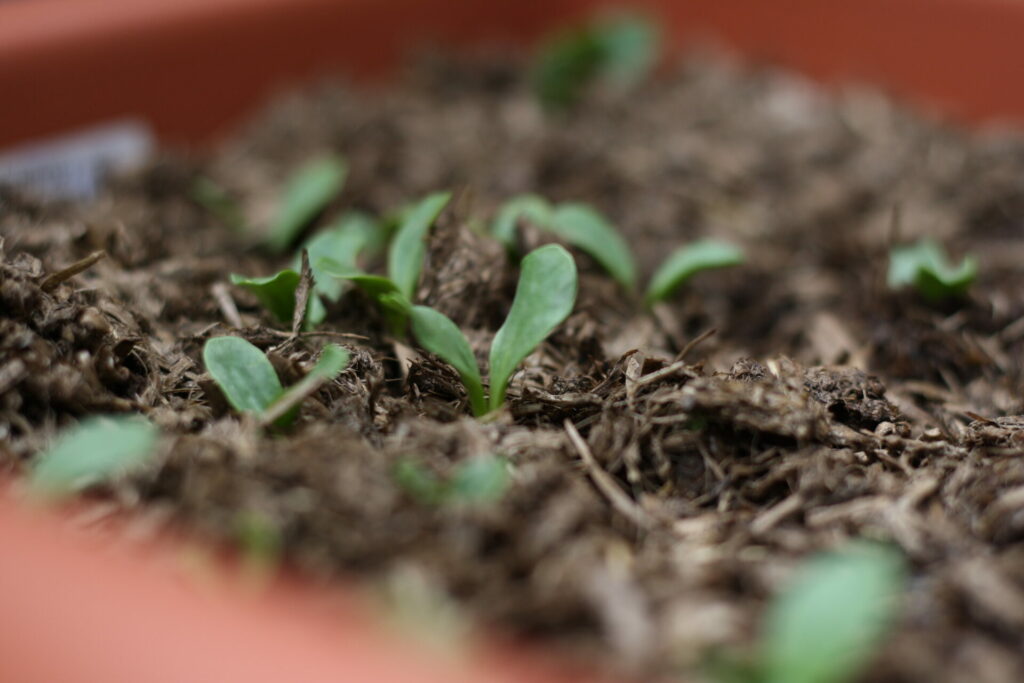
Safflower seedlings, 2023
Each step further deepened my connection to the natural world and heightened my appreciation for the beauty that can be cultivated through mindful and environmentally conscious gardening. Through trial and error, I identified the easiest dye plants that thrived on my balcony, delivering stunning results with minimal effort. These plants became my trusted companions, transforming my gardening space into a living canvas of hues. I am delighted to share with you my top picks for these effortless dye plants that will bring vibrancy and joy to your own balcony garden.
Marigolds
Marigolds (Tagetes spp.) are well-known for their vibrant and cheerful blooms, but they also have valuable dyeing properties. The flowers of marigolds can produce shades of yellow, orange, and even some green tones. With their ease of cultivation and abundant blooms, marigolds make a fantastic choice for natural dyeing projects. Growing marigolds in containers on the balcony allows for convenient access to these colorful flowers.
Last year I grew various marigold varieties, including the edible spicy variety. Marigolds proved to be delightful plants, requiring minimal effort and attention while offering a multitude of benefits. Not only are they fuss-free and easy to grow, but their medicinal properties also make them excellent companion plants in the garden. From their vibrant blooms to their aromatic foliage, marigolds have become cherished additions to my gardening endeavors.
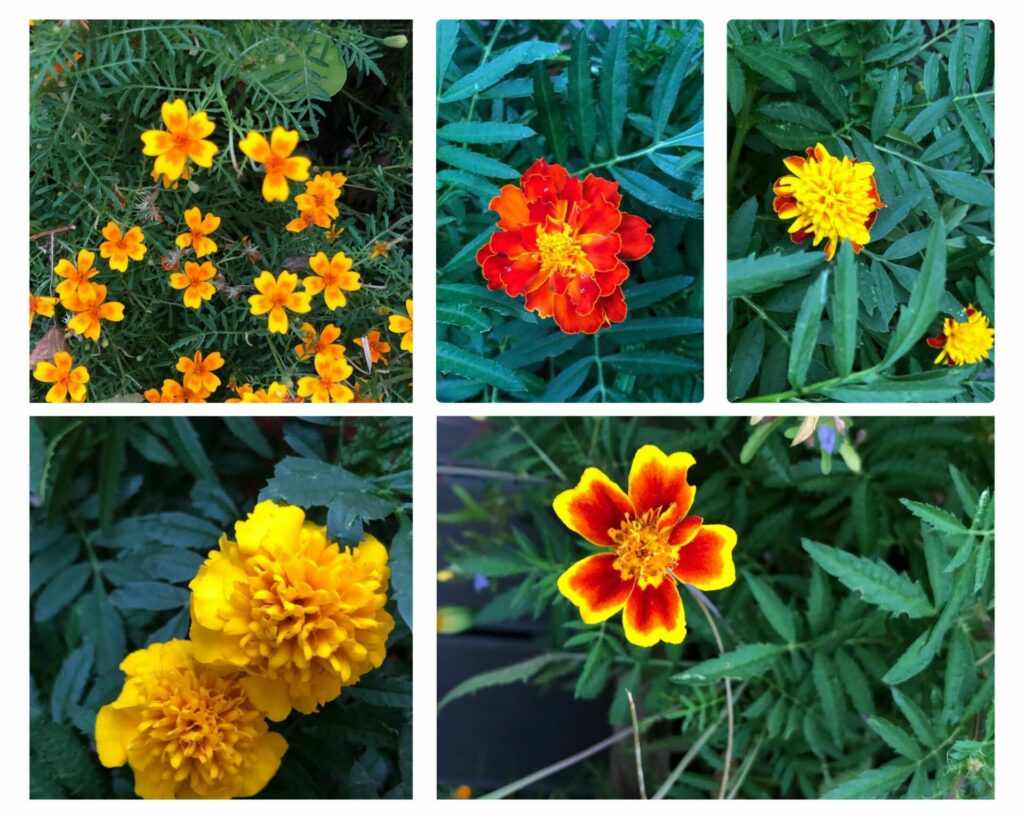
Marigolds
Calendula
Calendula (Calendula officinalis), also known as pot marigold, is a versatile plant with both culinary and medicinal uses. Its bright and sunny flowers possess dyeing potential, producing shades of yellow and orange. Calendula is relatively easy to grow in containers, making it a delightful addition to a balcony garden. Not only can you enjoy the beautiful blossoms, but you can also explore its dyeing capabilities and incorporate its vibrant colors into your creative projects.
Calendula thrive best in a sunny location, necessitating a balcony that faces south or southwest (in the Northern hemisphere) to provide the optimal conditions for their growth. Therefore, it is crucial to choose a spot with ample sunlight to ensure their flourishing.
While my focus with calendulas was not primarily on natural dyes, I cultivated them specifically for the purpose of creating calendula oil. This precious oil, derived from the petals of calendula flowers, possesses remarkable skincare and medicinal properties. Exploring the multifaceted uses of calendulas added a new dimension to my gardening experience, allowing me to tap into their therapeutic potential and enhance my self-care routines.

Calendula
Japanese indigo
Japanese indigo, also known as Polygonum tinctorium, is a fascinating plant with rich blue dye properties. It has been traditionally used in Japan for centuries to produce beautiful shades of indigo. The leaves of this plant contain the pigment indican, which is converted into indigo dye through a fermentation process. Japanese indigo is relatively easy to grow and can be cultivated in containers, making it a perfect choice for balcony gardens.
Japanese indigo can be grown as an annual in regions with cooler climates, such as Europe, by starting the seeds indoors and transplanting them outside once the risk of frost has passed. It is essential to ensure the plant receives full sun and well-drained soil.
However, it is important to note that Japanese indigo plants are not fond of extreme heat. Therefore, growing them on a balcony that experiences high temperatures due to radiating heat from the surrounding walls may pose a challenge. To overcome this obstacle, you can implement strategies such as providing shade during the hottest parts of the day or using reflective materials to reduce heat absorption. By carefully managing the balcony environment and ensuring proper growing conditions, you can still have success in cultivating Japanese indigo even in areas with warmer balconies.

Japanese Indigo
Woad
Woad, scientifically known as Isatis tinctoria, is an ancient dye plant that has been used for centuries to produce blue dyes. It has a long history in Europe. The leaves of the woad plant contain the dye precursor called indican, which can be extracted to create blue colors. Woad is a hardy plant and can be grown in containers on a balcony with proper care.
For optimal growth of woad, it is crucial to provide pots that are at least 30cm deep, as this accommodates the tap root system of the plant. While woad is generally a low-maintenance plant, it thrives best when exposed to full sun, which stimulates pigment production in its leaves. Ensuring the plants receive ample sunlight is essential to achieve vibrant and rich colors. With these considerations in mind, you can successfully cultivate woad in your balcony garden and enjoy the benefits of its natural dye properties.
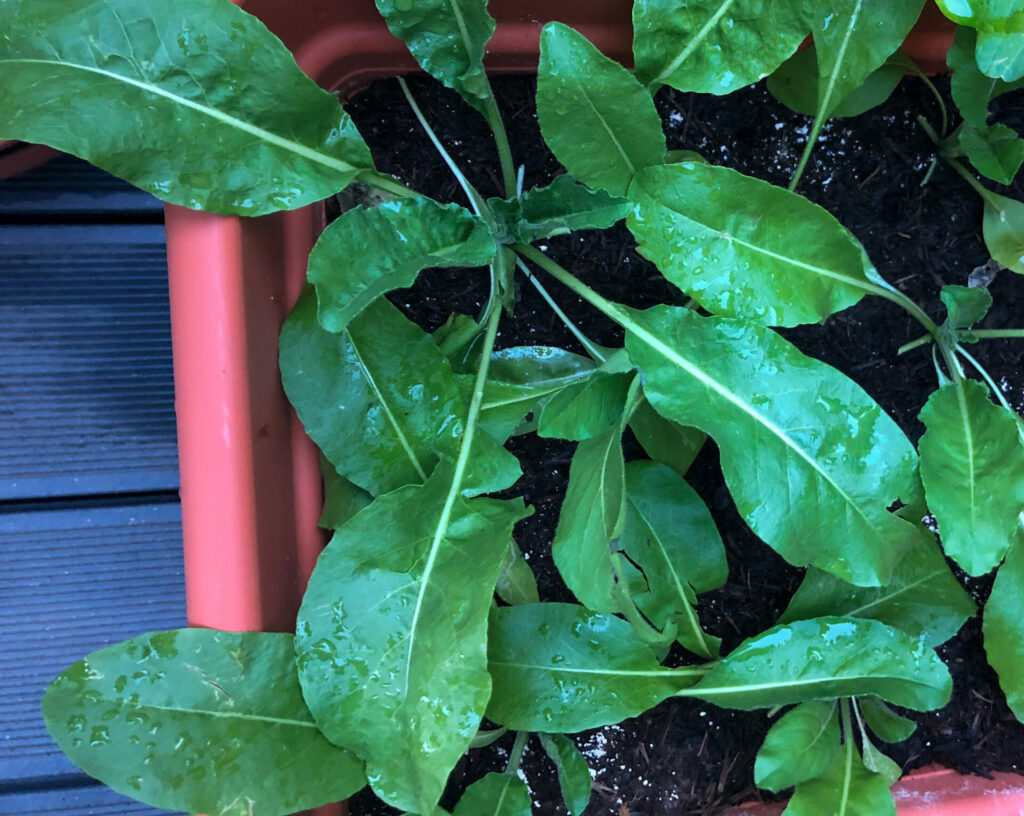
Woad
Thyme
Thyme (Thymus spp.) is not only a versatile herb for culinary use but also a plant that offers natural dyeing potential. The leaves of certain thyme varieties, such as common thyme (Thymus vulgaris), can yield shades of yellow and green when used as a dye.
As a Mediterranean plant, thyme thrives when exposed to full sun. Providing ample sunlight allows it to flourish and maximize its growth. In fact, regular pruning promotes even more vigorous growth, making it an excellent practice to encourage the plant to thrive. With careful attention to sunlight and pruning, you can harness the dyeing capabilities of thyme while enjoying its aromatic and culinary uses right on your balcony.
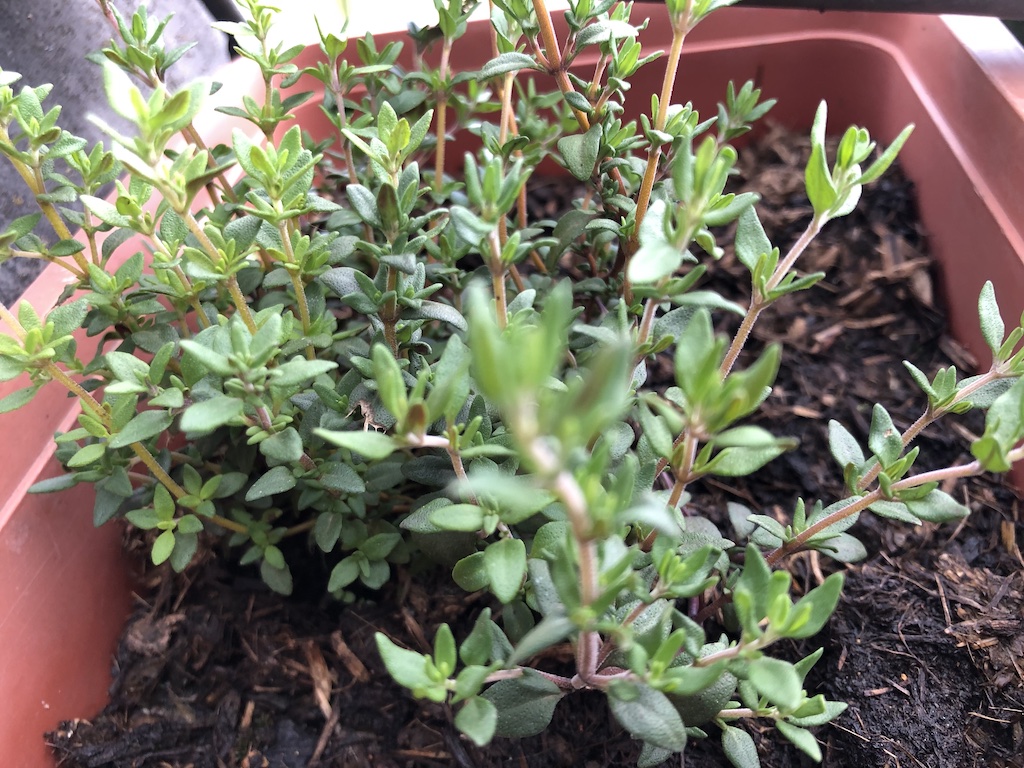
Thyme
Madder
Madder (Rubia tinctorum) is a perennial plant known for its vibrant red dye. Its roots contain the dye compound alizarin, which produces a range of red hues. Madder has been cultivated for centuries and has a rich history in textile dyeing. It can be grown in containers on the balcony, and the roots can be harvested for dye extraction.
This is my first year of growing madder, it has a long-standing history and remarkable dyeing properties. However, patience is key as I will need to wait for approximately 2-3 years before I can harvest the roots for extracting vibrant colors.
Cultivating madder is an exercise in delayed gratification, but the rewards of its rich pigments will be well worth the wait. With each passing year, the roots will develop and deepen in color, offering a valuable resource for future natural dyeing projects.
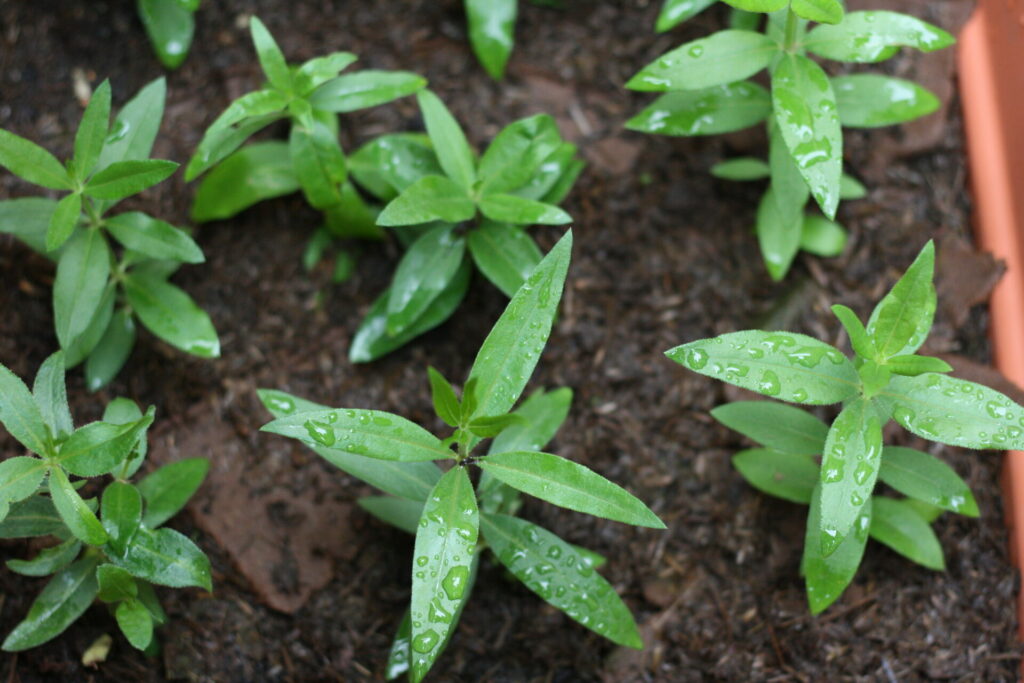
Madder
While madder is not particularly demanding when it comes to soil type, cultivating it in slightly alkaline soil has been observed to enhance the depth of color in its roots.
Dyer’s coreopsis
Dyer’s coreopsis (Coreopsis tinctoria) is a beautiful annual flower that offers a spectrum of yellow and orange hues for natural dyeing. The flower petals contain various pigments, including flavonoids, which can be used to create bright and vibrant colors. Dyer’s coreopsis is a low-maintenance plant that thrives in containers, making it a wonderful addition to a balcony dye garden. It does require full sun for optimal growth of its flowers. It is a no fuss plant that can easily be grown in containers.
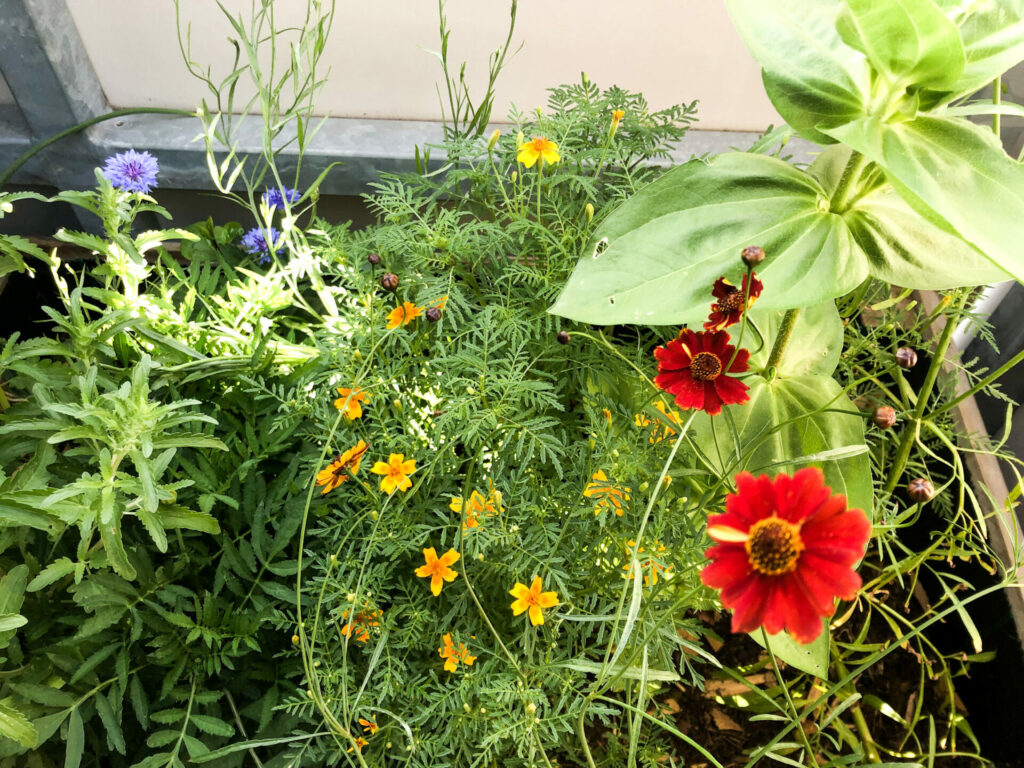
Mahogany dyer’s coreopsis
In conclusion, growing easy dye plants on your balcony opens up a world of natural color possibilities. With plants like Japanese indigo, woad, thyme, madder, dyer’s coreopsis, marigolds, and calendula, you can effortlessly create vibrant dyes for your artistic projects.
Discover the captivating allure of natural colors and unlock your creative potential, all within the confines of your very own balcony.
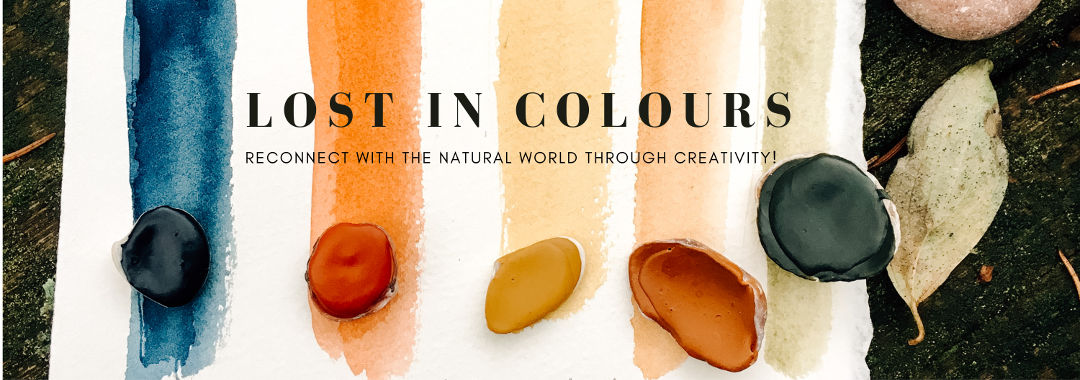
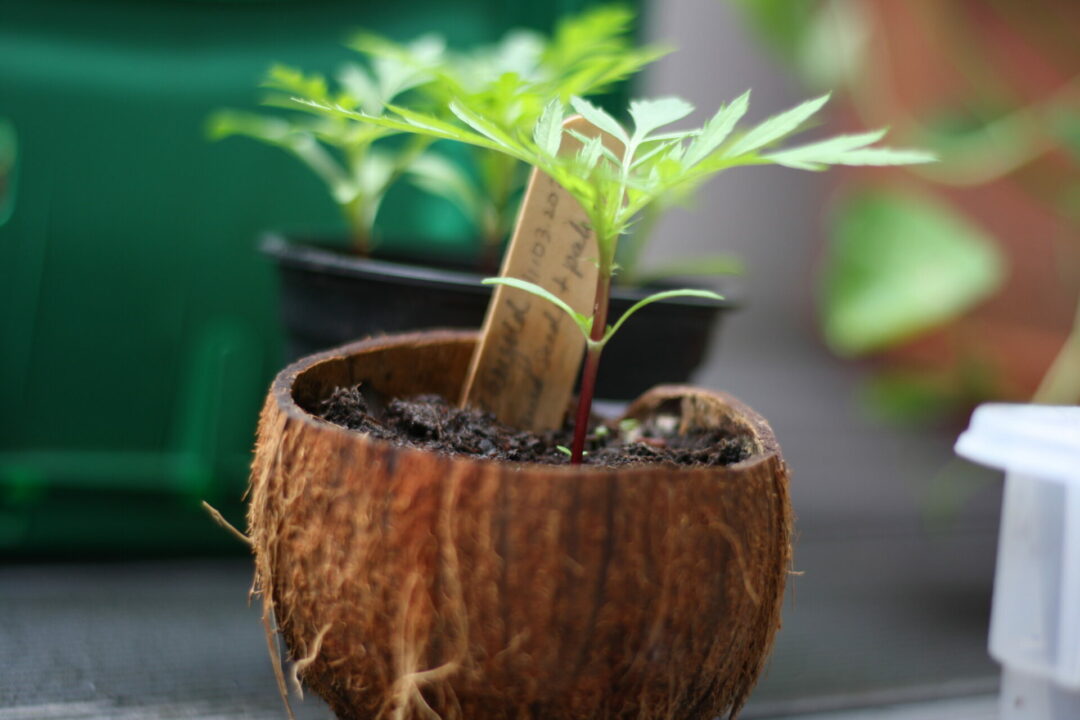
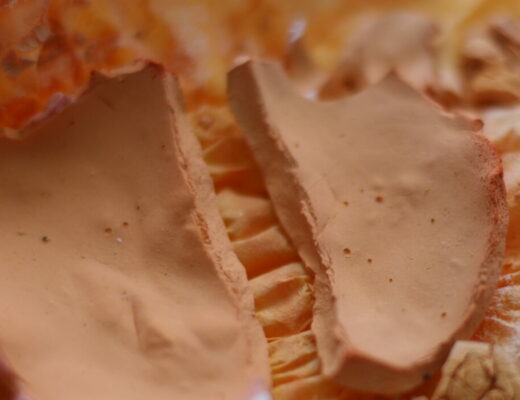
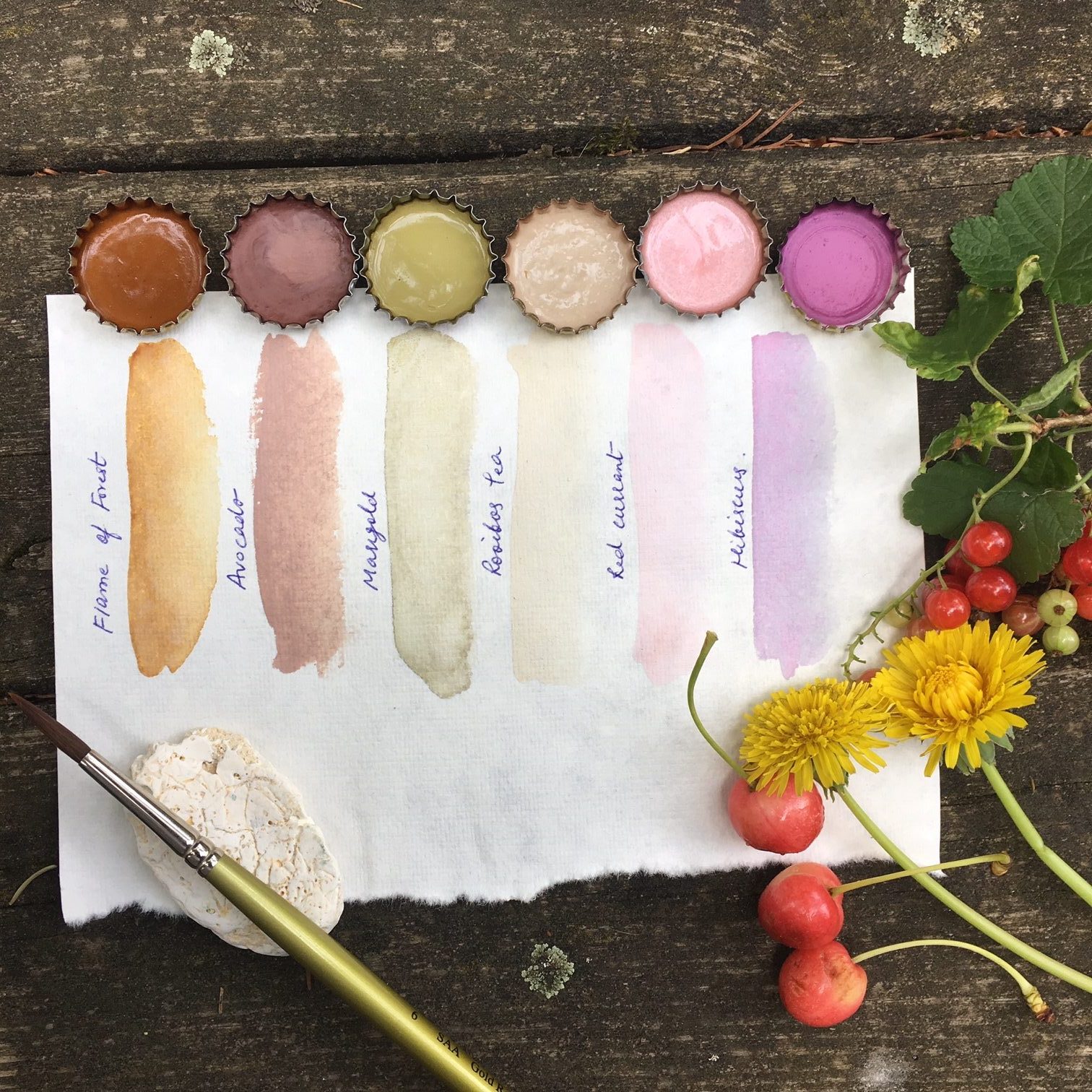
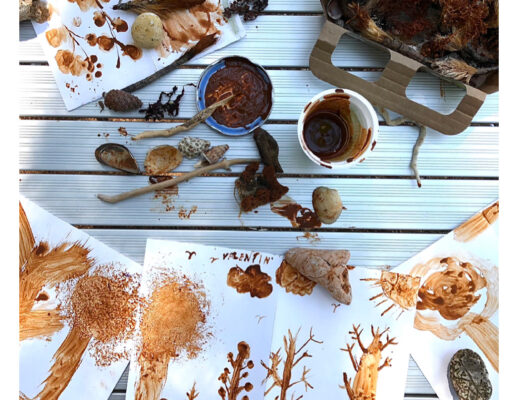
No Comments